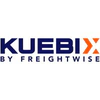Automate shipment creation, tracking, and invoicing.
Setup EDI with BrokerPro TMS and book more loads while reducing errors.
-
EDI 204 Load Tenders
- Automatically receive and accept incoming load tenders from customers. Each tender received can be processed, accepted or rejected based on your criteria.
-
EDI 990 Load Tender Responses
- Confirm receipt of EDI 204 load tenders and transmit your acceptance or rejection of the load to your customer. EDI 990 allows you to automatically update your customers with the load status.
-
EDI 210 Invoicing
- Get paid faster by sending load invoice data directly to your customer after the load is marked as invoiced within BrokerPro -- eliminating errors and unnecessary email exchanges.
-
EDI 214 Tracking and Tracing
- Send tracking updates directly into your customer’s systems. You can choose to make these updates from within BrokerPro TMS or leverage our tracking integrations for even more ease of use.
Book more loads and serve customers.
Faster.
BrokerPro's EDI integrations allow you to better serve your customers while reducing your operational overhead. We already integrate with the leading providers and are adding more all the time.

Bath and Body Works

Diamond Pet Foods

Caterpillar

e2open

Harry & David

James Hardie

Johnson Controls

KBX Logistics

Kleinschmidt

Kuebix

Macy's

Mercurygate International

Nation Pizza and Foods

Orderful

PCS Software

Project44

Shipwell

Sugar Foods

Trax Technologies

Trimble

UberFreight

United States Postal Service